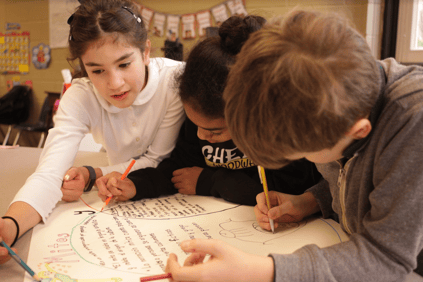 Knowledge about language. Children learning multiple languages are better at establishing abstract connections between written words, sounds, and the concepts they represent. They do this necessarily by moving between languages, understanding that a word or character is an arbitrary representation for an object. This understanding translates into better phonemic awareness (phonemes are units of sounds which make up a word) which impacts reading ability and understanding the concept of print.
Knowledge about language. Children learning multiple languages are better at establishing abstract connections between written words, sounds, and the concepts they represent. They do this necessarily by moving between languages, understanding that a word or character is an arbitrary representation for an object. This understanding translates into better phonemic awareness (phonemes are units of sounds which make up a word) which impacts reading ability and understanding the concept of print.
Mental Flexibility and Creativity. Bilinguals have been shown to excel in areas of divergent thinking: the ability to come up with many different solutions to a single problem rather than just one. In an experiment run by Professor Linda Tropp of the University of Massachusetts Amherst, bilingual children were able to generate three times more high-quality hypotheses for a scientific problem vs. monolinguals. In another experiment involving rearranging of pegs in various orientations, while preserving a pattern, bilinguals’ descriptions were more analytical and systematic vs. monolinguals.
Executive Function. Bilinguals excel at tests that require them to focus on one or two aspects of a task while suppressing attention to its other aspects: not letting conflicting or extraneous information affect the outcome. This is a measure of the “agility” of the mind as measured in tests, for example, where children are given cards with objects shown in two dimensions and asked to sort along one dimension and then the other. Bilingual children are able to switch from sorting based on color, to shape more quickly and accurately vs. monolinguals. Children who switch from one language to the other are continually building their executive function skills.
-5.png?width=251&height=52&name=HWIS%20Logo%20Green_Gold%20Transparent%20Background%20(3)-5.png)





